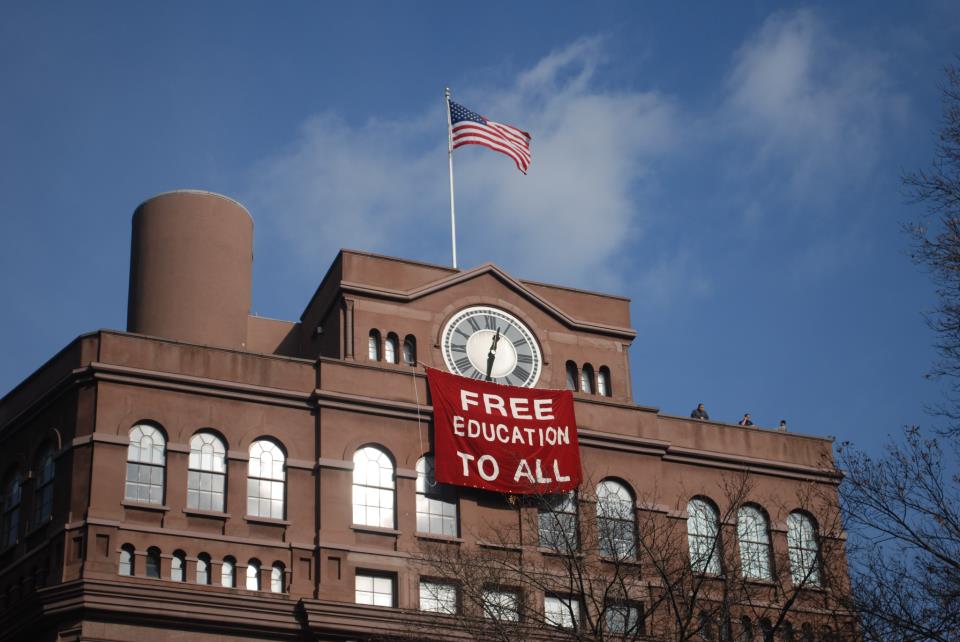
The Cooper Union, home to a storied and once tuition-free art school in New York, is on track to restore its original mission to make education as “free as air and water,” in the words of founder Peter Cooper, by 2029.
Two years after devising the plan, which called for building a reserve of $250 million, the pandemic initially raised concerns about whether it would meet that goal.
“We were worried we would dip, but we landed right on budget,” president Laura Sparks tells Artnet News. “We got out of the gate strong and exceeded our goals in the first couple of years, so we were able to finish on track this past fiscal year.”
The Cooper Union, which was founded in 1859, offers degrees in art, architecture, and engineering. Using a 1902 gift from Andrew Carnegie and income from real-estate taxes on the Chrysler Building, it charged no tuition for over a century, and thus attracted the world’s top students. Among the famed academy’s many esteemed graduates are artists Lee Krasner and Wangechi Mutu, and architects Elizabeth Diller and Daniel Libeskind.
In 2011, after erecting a new $167 million building, the school revealed that it was in serious financial trouble and that it might have to charge tuition to survive. After a long and bitter internal conflict, the school began to charge the following year.
The students revolted. Alleging financial mismanagement and extravagant spending, students and alumni brought a lawsuit in 2014, and the New York attorney general launched an investigation. Several board members who had approved of charging tuition abruptly departed on bitter terms, and the president resigned the next day. The settlement of the suit resulted in ongoing oversight by a financial monitor.
Cooper Union president Laura Sparks. Photo by Leo Sorel, courtesy of the Cooper Union.
“We were coming off of a challenging period when the school was fighting with itself,” says Sparks. But it managed to rally support from alumni and foundations and now, she says, every student receives a scholarship that covers at least half of their tuition. On average, students receive 78 percent of coverage.
“We knew last year would be difficult financially, but it was the first year we were scheduled to increase scholarships,” she says. “We fulfilled that commitment, and we continued to increase scholarships again this year.”
Kroll Associates, the corporate consulting firm that was appointed as the school’s financial monitor, gave Cooper’s latest annual report a thumbs-up. Against “unprecedented headwinds,” it says, “Cooper Union has maintained its momentum in implementing the thoughtful and responsible plan it adopted in 2018 to improve Cooper Union’s financial condition and to return to a full-tuition scholarship model within the foreseeable future.”
Art school dean Mike Essl had a bit more emotional reaction than Kroll. “There was the assumption that the plan would have to be adjusted or we would not hit the marks,” he tells Artnet News. “But it’s amazing. When Laura gave us the news, I just started weeping.”
The plan called for $14.2 million in unrestricted contributions during the first three-year period; the school has drummed up $15.9 million. Institutional giving averaged $1.9 million annually between 2017 and 2020, the school says, representing a 61 percent increase over fiscal year 2017, including a $2 million institutional gift in fiscal year 2019.
The plan had its critics in the community, including those who felt the school’s reputation would be tarnished if it continued to charge any tuition, and would lead to a drop in the caliber of incoming students. (The administration counters that students’ GPAs have bumped up two points and that SAT scores have been consistent.)
The school has also rolled out an ambitious new facility—even though students can’t make full use of it in person yet—called the IDC Foundation Art, Architecture, Construction and Engineering Lab, which offers students advanced equipment like 3D printers, robotic arms, and VR technologies.
“The school is surviving because of new leadership,” says Ray Savino, president of the New York-based foundation, which gave $2 million to establish the lab. He described Cooper as “three schools whose curriculums touch each other. Cooper is a great model from our perspective.”